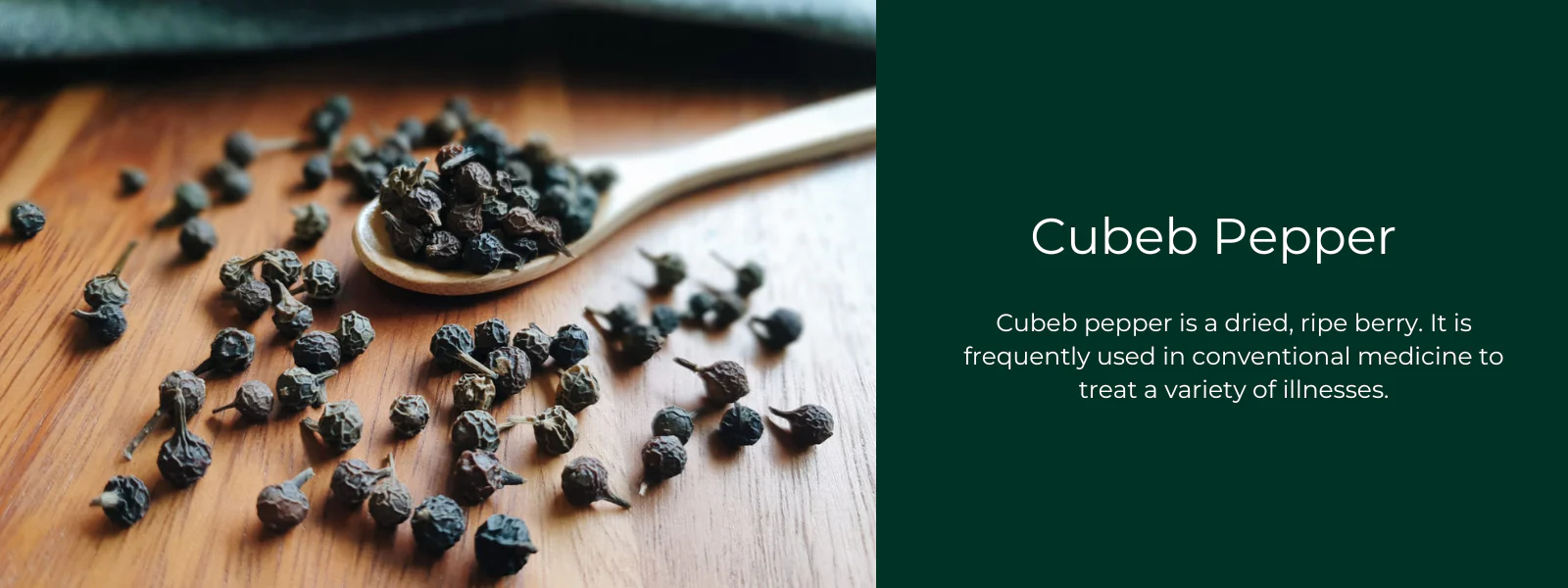In the vast world of spices, some names stand out instantly—black pepper, cinnamon, turmeric. But beyond the mainstream lies a lesser-known gem: Cubeb pepper. Also known as Java pepper or tailed pepper, this intriguing spice has a rich history, unique flavor profile, and numerous medicinal and culinary benefits. Let’s take a closer look at this aromatic spice that has been both revered and forgotten over time.
What is Cubeb Pepper?
Cubeb pepper (Piper cubeba) is a tropical climbing plant belonging to the Piperaceae family, the same as black pepper (Piper nigrum). It is native to Java and Sumatra in Indonesia, which is why it’s commonly called Java pepper. The spice is derived from the dried, unripe fruit of the plant, which resembles black peppercorns but with a distinctive tail or stalk attached—hence the nickname tailed pepper.
The flavor of cubeb is complex—peppery, pungent, and slightly bitter, with hints of allspice, nutmeg, and eucalyptus. This makes it a versatile spice in both sweet and savory applications.
A Journey Through History
Cubeb pepper has a long and fascinating history dating back to ancient civilizations. It was known to the Greeks and Romans and was widely used in the Middle Ages as a spice and medicinal remedy. Arab traders introduced cubeb to Europe during the early medieval period, and it became immensely popular, even considered an aphrodisiac.
In the 13th and 14th centuries, cubeb was a luxury commodity, often used by the wealthy to flavor meats, wines, and desserts. However, its popularity declined sharply in the 17th century when black pepper and other spices became more accessible.
Today, cubeb pepper is used primarily in traditional medicine, regional cuisine, and some perfume formulations, but it is still relatively obscure in the global spice market.
Flavor Profile and Culinary Uses
Cubeb pepper offers a spicy warmth that is less sharp than black pepper but more aromatic and slightly resinous. Its flavor combines the heat of pepper, the cooling notes of menthol, and a touch of bitterness.
Common Culinary Uses:
- Moroccan and Middle Eastern Cuisine: Used in spice blends like ras el hanout.
- Indonesian Dishes: Used in traditional recipes to flavor curries, stews, and rice.
- Pickling and Preserving: Occasionally used for its pungent aroma.
- European Medieval Dishes: Used in meat pies, sauces, and mulled wine.
In modern cuisine, cubeb can be used to season roasted meats, stews, rice, and vegetable dishes. It also pairs well with cloves, cinnamon, nutmeg, and cardamom, making it suitable for desserts and drinks, such as cocktails and spiced teas.
Medicinal Properties of Cubeb Pepper
Cubeb has long been treasured in Ayurvedic, Traditional Chinese, and Unani medicine for its healing properties. Modern studies are beginning to validate many of its traditional uses.
Health Benefits:
- Respiratory Health
Cubeb is known for its expectorant and antiseptic properties. It helps clear congestion and is used to treat bronchitis, asthma, and coughs. The menthol-like cooling sensation helps soothe irritated throats. - Digestive Aid
The spice stimulates digestion, alleviates bloating and gas, and may relieve indigestion. It also acts as a mild carminative and stomachic. - Urinary Tract Infections (UTIs)
One of cubeb’s most well-documented traditional uses is in treating UTIs. It has diuretic and antibacterial properties that support urinary tract health. - Oral Health
In the past, cubeb was used in chewing gums and tooth powders due to its antimicrobial action. It helps fight bad breath and oral infections. - Anti-inflammatory and Antioxidant Effects
Cubeb contains compounds like cubebin and cubebol, which offer anti-inflammatory and antioxidant effects, potentially aiding in conditions like arthritis and oxidative stress. - Aphrodisiac Qualities
Historically, cubeb was believed to stimulate libido. While scientific evidence is limited, it was used in tonics aimed at boosting sexual health.
Essential Oil and Aromatherapy
Cubeb essential oil is extracted from the berries and leaves of the plant. The oil has a spicy, woody, and slightly camphoraceous aroma. In aromatherapy, it is used for:
- Respiratory relief
- Emotional upliftment
- Antiseptic purposes
- Insect repellents
It is also used in perfumery to add warm, spicy, and exotic notes to fragrances.
How to Use Cubeb Pepper
- Whole Berries: Toast lightly and grind before using in spice blends or directly in recipes.
- Ground Form: Available in specialty spice shops—store in a sealed container away from light.
- Infusions: Can be used to make herbal teas or added to hot beverages for a warming effect.
- Cocktails: Ground cubeb or cubeb syrup adds complexity to gin and whiskey drinks.
A little goes a long way, so use sparingly to avoid overpowering the dish.
Where to Buy Cubeb Pepper
Due to its niche status, cubeb pepper is not widely available in mainstream supermarkets. However, it can be sourced from:
- Online spice retailers
- Herbal and Ayurvedic stores
- Specialty gourmet shops
When buying, ensure that the pepper is authentic and organically sourced to reap the full spectrum of its benefits.
Conclusion: Rediscovering a Lost Treasure
Cubeb pepper is a forgotten treasure of the spice world. With its rich history, unique flavor, and impressive medicinal benefits, it deserves a revival in modern kitchens and medicine cabinets. Whether you’re a spice enthusiast, a herbalist, or a curious cook, cubeb offers a world of aromatic complexity and healing potential waiting to be explored.
If you’re looking to diversify your spice rack or experiment with ancient ingredients, give Cubeb pepper a try—you just might fall in love with this flavorful relic of the past.
FAQs
Q1: Is cubeb pepper safe to consume?
Yes, when used in moderation, cubeb is safe for most people. However, pregnant women and those with underlying health conditions should consult a healthcare provider.
Q2: What does cubeb pepper taste like?
It has a peppery, slightly bitter taste with hints of menthol, pine, and allspice.
Q3: Can cubeb be used as a substitute for black pepper?
Not directly. Its flavor is more aromatic and less sharp, so it works better in specific dishes or spice blends rather than as a 1:1 substitute.
Q4: How is cubeb used in traditional medicine?
Cubeb is used to treat respiratory issues, digestive problems, urinary tract infections, and oral infections.
Q5: Is cubeb pepper the same as long pepper?
No. While both are in the Piperaceae family, they are different species with distinct appearances and flavors.











